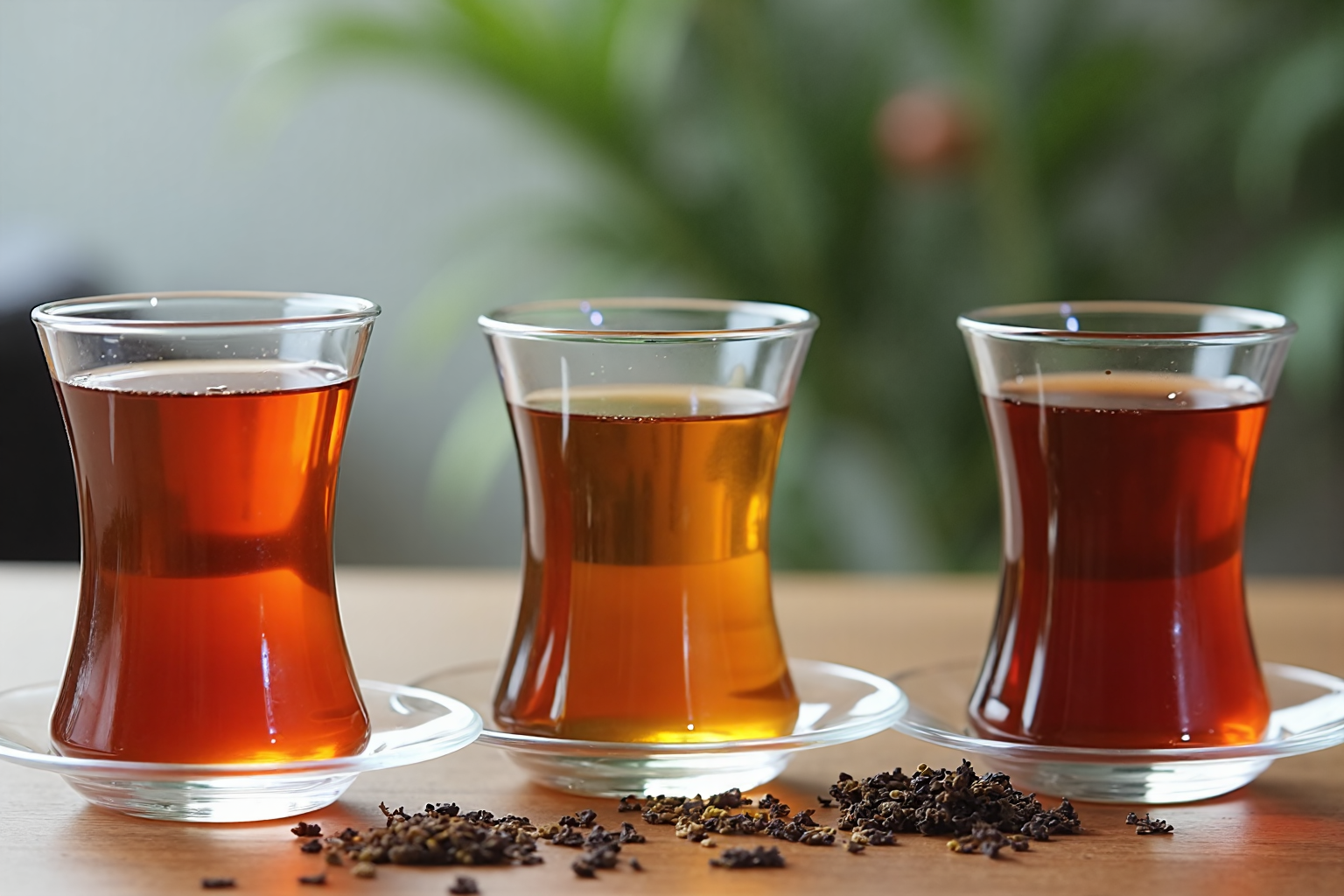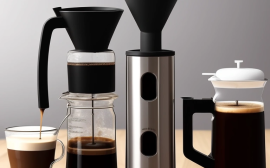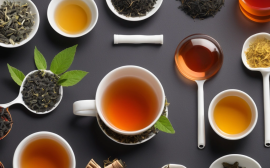Introduction: The Steep Price of Luxury Tea
Is expensive tea truly worth the steep price tag? Or can budget-friendly options deliver a similarly satisfying experience? This is a question that has plagued tea lovers for centuries, sparking debates across kitchen tables and online forums alike. We delve into this age-old question with a blind taste test, pitting luxury teas against their affordable counterparts to uncover the truth behind the cost. From the fragrant leaves of rare Darjeeling to the humble chamomile blossom, we explore the spectrum of tea, examining the factors that contribute to both price and perceived quality. Our exploration considers not just the taste, but also the origins, processing methods, and overall value proposition of each tea, providing a comprehensive analysis for discerning consumers and casual drinkers alike. The world of tea offers a vast and varied landscape of flavors, aromas, and cultural significance. Luxury tea brands often boast meticulous sourcing and processing, utilizing rare cultivars, specialized withering techniques, and intricate flavor pairings. These factors undoubtedly contribute to the elevated price tag, promising a refined and complex sensory experience. For example, premium Silver Needle white tea, known for its delicate buds and subtle sweetness, often commands a higher price due to the labor-intensive harvesting process. But does this translate to a demonstrably superior taste? Conversely, budget tea brands focus on accessibility and affordability, often utilizing more common tea varieties and streamlined production methods. Brands like Bigelow and Celestial Seasonings offer a wide array of flavors and blends at accessible price points, making them a popular choice for everyday tea drinkers. While these teas may not possess the same intricate flavor profiles as their luxury counterparts, they can still provide a satisfying and enjoyable tea drinking experience. Our blind taste test aims to determine whether the perceived value of luxury tea translates to a tangible difference in flavor, aroma, and overall enjoyment. By removing branding and preconceived notions, we level the playing field, allowing the true essence of each tea to shine through. This blind tasting methodology provides valuable insights for consumers seeking to make informed purchasing decisions, balancing cost and quality in their pursuit of the perfect cup.
Methodology: A Blind Pursuit of Flavor
To ensure a truly objective assessment, our blind taste test adhered to a rigorous methodology. A diverse panel of ten participants, ranging from seasoned tea connoisseurs to casual drinkers, was assembled. This blend of expertise and everyday preference allowed us to capture a comprehensive spectrum of opinions, reflecting how both dedicated tea enthusiasts and average consumers might perceive the differences between luxury and budget-friendly teas. Each participant was presented with a series of unmarked cups, containing both expensive teas from renowned luxury tea brands like Rishi and Tea Forté, and affordable options from well-known budget tea brands such as Bigelow and Celestial Seasonings. The selection encompassed a variety of tea types, including black tea, green tea, oolong tea, white tea, and herbal infusions, ensuring a broad representation of flavor profiles and brewing characteristics. Preparation methods followed optimal brewing instructions for each specific tea type, controlling water temperature and steeping time to ensure consistent and accurate results. This meticulous approach eliminated any potential bias introduced by brewing variations, allowing the true character of each tea to shine through. Participants evaluated each sample based on four key criteria: aroma, taste, mouthfeel, and visual appeal. Detailed tasting notes were recorded for each tea, capturing the nuances of flavor, the complexity of aromas, the texture on the palate, and the visual characteristics of the brewed tea. These comprehensive notes provided a rich dataset for comparison and analysis, enabling us to identify clear distinctions between the luxury and affordable tea categories. For instance, we observed that the premium Sencha Green from Rishi exhibited a distinctly vegetal aroma with notes of fresh grass and a subtle sweetness, while the Bigelow Classic Green had a lighter, more grassy aroma. This comparison highlighted the potential impact of higher-quality tea leaves and specialized processing techniques often employed by luxury tea brands. Furthermore, the visual appeal of the teas was also considered, as the color and clarity of the brewed tea can contribute to the overall sensory experience. The deep amber hue of the Tea Forté Earl Grey, for example, contrasted with the slightly lighter shade of the Bigelow Earl Grey, suggesting potential differences in tea leaf quality or processing methods. By incorporating these diverse evaluation criteria, our blind taste test sought to provide a holistic comparison of the sensory experience offered by both expensive and affordable teas, offering a valuable guide for consumers seeking the best tea for their budget and palate. The meticulous preparation, diverse panel, and structured evaluation process ensured that our findings reflect a balanced and objective assessment of the value proposition offered by both luxury and affordable tea brands.
Tasting Notes: Unveiling the Nuances
The blind taste test revealed a fascinating dichotomy between expensive tea and affordable tea options. Luxury tea brands, such as Rishi with their Sencha Green, showcased a remarkable complexity that engaged multiple senses. The Rishi Sencha, for example, offered a delicate balance of grassy notes, subtle umami, and a lingering sweet finish, characteristics often attributed to meticulous harvesting and processing techniques. Similarly, Tea Forté’s Earl Grey presented a captivating aroma profile, with bright citrus notes and a smooth, full-bodied taste, highlighting the quality of their ingredients and expert blending. These premium teas demonstrated the potential for a truly refined tea experience, justifying their position within the luxury goods market.
However, the tasting also highlighted that exceptional flavor isn’t exclusive to expensive tea. Certain budget tea brands, like Bigelow’s Classic Black Tea, proved that affordability doesn’t necessarily equate to a compromise in taste. While perhaps lacking the nuanced complexity of the luxury options, Bigelow’s black tea surprised many tasters with its robust, bold character and satisfying mouthfeel. It delivered a classic black tea experience, with malty notes and a brisk finish, demonstrating that a well-crafted blend can offer excellent value for money. This highlighted the potential for consumers to find a best tea that suits their preferences without breaking the bank.
This tea comparison underscored the importance of considering various factors beyond price when evaluating tea quality. The meticulous sourcing and processing of premium tea leaves, often involving rare cultivars and specialized techniques, undoubtedly contribute to the heightened flavor profiles of luxury tea brands. Tea experts often point to these factors as key differentiators, highlighting the care and attention that goes into producing a truly exceptional tea. However, advancements in blending and processing techniques have also allowed affordable tea brands to elevate their offerings, creating surprisingly complex and enjoyable teas at a fraction of the cost. The blind taste test demonstrated that a sophisticated palate can still find satisfaction in both categories of tea.
Furthermore, the blind taste test revealed that individual preferences play a crucial role in determining the perceived value of a tea. While some tasters were captivated by the subtle nuances and layered flavors of premium teas, others preferred the bolder, more straightforward profiles of budget tea brands. This highlights the subjective nature of taste and emphasizes the importance of exploring various tea options to find what resonates with each individual. Ultimately, the best tea is the one that best satisfies the individual’s palate and aligns with their personal preferences. This reinforces the idea that the perceived value for money isn’t just about cost but also about individual taste and preference.
The insights from this tea review and blind taste test suggest that the world of tea offers something for everyone. Whether one is seeking the refined experience of luxury tea brands or the satisfying simplicity of affordable tea options, there is a vast landscape of flavors to explore. The key is to understand the factors that contribute to tea quality, experiment with different brands and varieties, and ultimately, find the teas that best suit one’s taste and budget. This exploration will allow consumers to make informed decisions and discover their own best tea.
Expert Opinions & Consumer Insights
Tea experts emphasized the meticulous processes involved in crafting premium teas, from sourcing rare cultivars in remote regions like the Darjeeling slopes to employing specialized withering and oxidation techniques. These practices often contribute to the elevated price of luxury tea brands such as Rishi and Tea Forté. For example, Rishi’s Sencha Green undergoes a specific steaming process to preserve its vibrant green color and delicate vegetal notes, a detail that adds to both its cost and its unique flavor profile. This attention to detail extends to the packaging, which is often designed to enhance the luxurious experience, further justifying the higher cost per cup. Conversely, budget tea brands like Bigelow and Celestial Seasonings prioritize affordability, leveraging efficient production methods and readily available tea leaves. This approach allows them to deliver satisfying brews at a fraction of the price, making them a practical choice for daily consumption. Our blind taste test revealed that while these affordable options might not possess the same nuanced complexity as their premium counterparts, they still offer excellent value for money, appealing to consumers who prioritize budget over subtle flavor distinctions. Consumer perspectives on tea quality and value for money varied significantly. Some participants in our blind taste test, particularly self-proclaimed tea connoisseurs, readily identified and appreciated the subtle nuances present in the expensive teas. They highlighted the complex aromas, the layered flavors, and the lingering mouthfeel as characteristics justifying the premium price tag. These individuals valued the experience associated with brewing and savoring a high-quality tea, associating it with relaxation, mindfulness, and even a touch of luxury. Other participants, however, prioritized affordability and found equal satisfaction in the more accessible budget-friendly options. For them, a good cup of tea was primarily about taste and refreshment, and they didn’t perceive a significant difference in quality that justified the substantial price difference. This highlights the subjective nature of tea appreciation and the importance of considering individual preferences when deciding whether to invest in expensive tea or opt for a more budget-friendly alternative. Ultimately, the best tea, whether it’s from a luxury tea brand or a budget tea brand, is the one that best suits individual taste and budget. This tea comparison and blind taste test underscores that value for money can be found across the price spectrum, and choosing between a premium tea and an affordable tea depends on the individual’s priorities. This tea review and guide aims to help consumers navigate the diverse world of tea, empowering them to make informed decisions based on their preferences and budget, ensuring a satisfying tea-drinking experience regardless of price point.
Value Proposition: Balancing Cost and Quality
Luxury teas, often crafted from rare cultivars and processed with meticulous care, offer a refined sensory experience that extends beyond a simple beverage. Premium tea brands like Rishi and Tea Forté invest in high-quality ingredients and specialized techniques, resulting in complex flavor profiles and captivating aromas that discerning tea drinkers appreciate. This dedication to quality comes at a premium, making the cost-per-cup significantly higher than mass-market alternatives. For example, a single serving of a rare white tea from a luxury brand could cost upwards of $5, while a standard black tea bag from an affordable brand might cost less than $0.25. This price difference reflects not only the inherent ingredient cost but also the expertise and craftsmanship involved in producing these premium teas. Affordable tea brands, such as Bigelow and Celestial Seasonings, cater to a broader market with a focus on delivering satisfying brews at accessible price points. These brands often utilize more common tea varieties and streamlined production methods, resulting in a lower cost-per-cup without necessarily compromising on enjoyment. While they may not possess the same level of nuanced complexity as luxury teas, they provide excellent value for money and can be a great option for everyday consumption. For instance, a box of 20 Bigelow Classic Black Tea bags can be purchased for around $3, making it an economical choice for daily tea drinkers. The best choice between luxury and affordable teas ultimately depends on individual priorities. Budget-conscious tea lovers can explore a wide range of flavorful teas without breaking the bank. Options like Bigelow’s Earl Grey or Celestial Seasonings’ Sleepytime offer enjoyable taste experiences at a fraction of the cost of premium brands. In our blind taste test, some affordable options even rivaled luxury brands in certain categories like mouthfeel and overall satisfaction, proving that a satisfying cup doesn’t always require a steep price tag. However, for those who value the subtle nuances and intricate flavor profiles, the investment in luxury tea can be worthwhile. The delicate floral notes of a high-end jasmine tea or the rich, malty character of a premium Assam can elevate the tea-drinking experience to a new level of sensory enjoyment. Luxury teas also offer a connection to unique terroirs and traditional processing methods, adding an element of connoisseurship to the experience. Whether you prioritize value for money or a refined sensory experience, our tea guide and blind taste test results provide valuable insights to help you navigate the diverse world of tea and discover the perfect brew to suit your preferences and budget. Ultimately, the best tea is the one that brings you the most enjoyment, regardless of its price point.
Conclusion: Brewing Up the Final Verdict
Our blind taste test revealed that the world of tea offers a spectrum of experiences, from the everyday comfort of affordable brews to the nuanced indulgence of luxury blends. While luxury teas often deliver exceptional quality and complex flavor profiles, stemming from meticulous sourcing and processing, our findings demonstrate that affordable alternatives can provide a surprisingly satisfying experience, proving that value and enjoyment aren’t solely determined by price. Discerning tea drinkers willing to invest in premium teas, such as Rishi’s Sencha Green, may find the nuanced profiles and captivating aromas worthwhile, appreciating the subtle notes and lingering finish. However, budget-conscious consumers can explore a world of flavorful teas without breaking the bank, with options like Bigelow’s Classic Black Tea offering robust character and satisfying mouthfeel that rivaled some of the luxury tea brands in our blind tasting. This reinforces the idea that personal preference plays a significant role in determining the ‘best’ tea. For example, some participants favored the boldness of certain budget tea brands, while others gravitated toward the delicate complexity of expensive tea. Tea Forté’s Earl Grey, a luxury contender, exemplified this complexity with its distinct bergamot notes and smooth texture, a characteristic often attributed to high-quality tea leaves and specialized processing. Ultimately, the value proposition hinges on balancing cost and quality. Luxury tea brands often command a higher price per cup due to factors like rare cultivars, specialized growing conditions, and intricate processing methods. These factors contribute to the unique characteristics that distinguish premium teas. Budget tea brands, on the other hand, prioritize affordability, offering a broader appeal by delivering satisfying brews at a fraction of the cost. This makes them an excellent entry point for tea exploration and everyday enjoyment. In our comparison of expensive tea vs. affordable tea, we found that while the price difference is often substantial, the gap in enjoyment is often less pronounced than one might expect. This highlights the importance of considering individual preferences, budget, and the significance placed on subtle flavor distinctions when choosing between luxury and budget-friendly options. Our tea guide suggests considering the occasion and desired experience. A quiet afternoon of contemplation might call for the nuanced elegance of a premium tea, while a morning pick-me-up could be perfectly served by a robust and affordable blend. The best tea, therefore, is subjective and depends on individual taste and budget. This blind taste test underscores the diverse landscape of tea, offering options for every palate and pocketbook.



